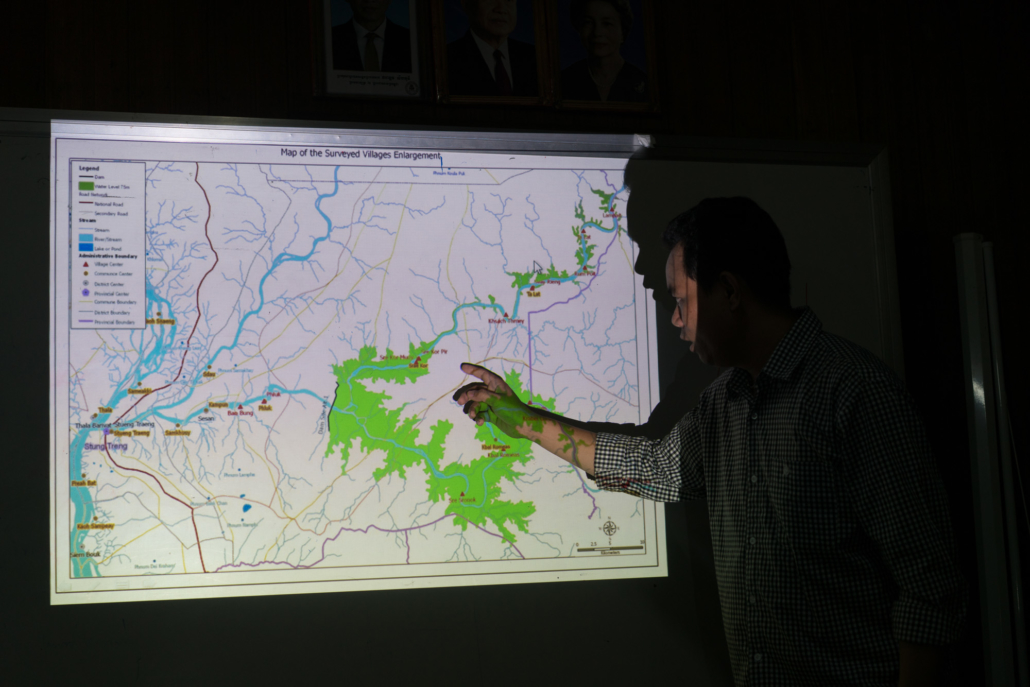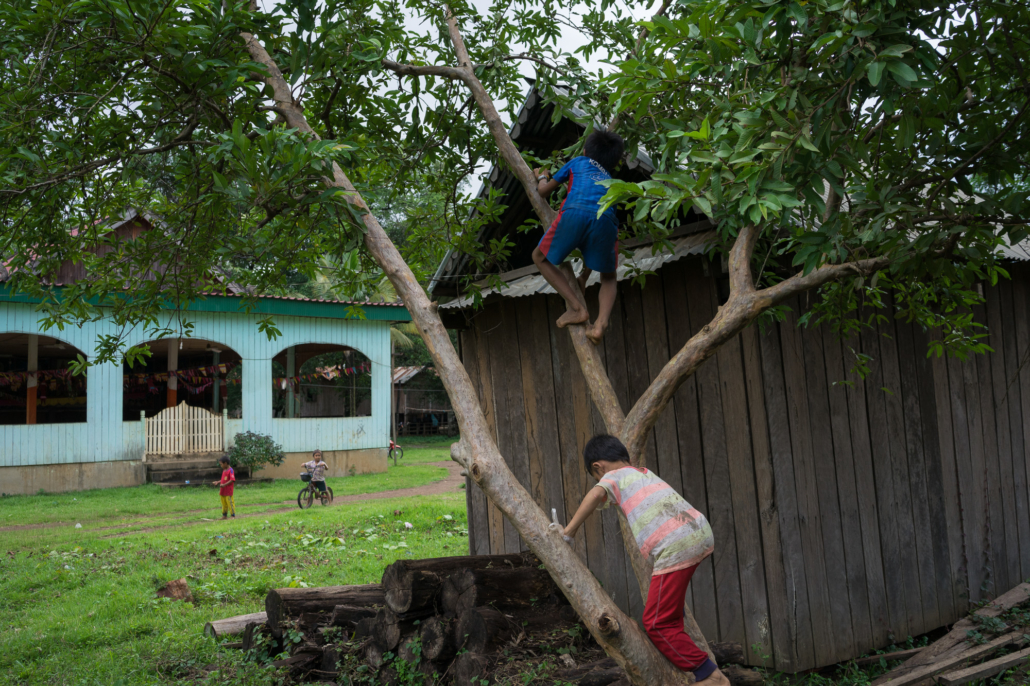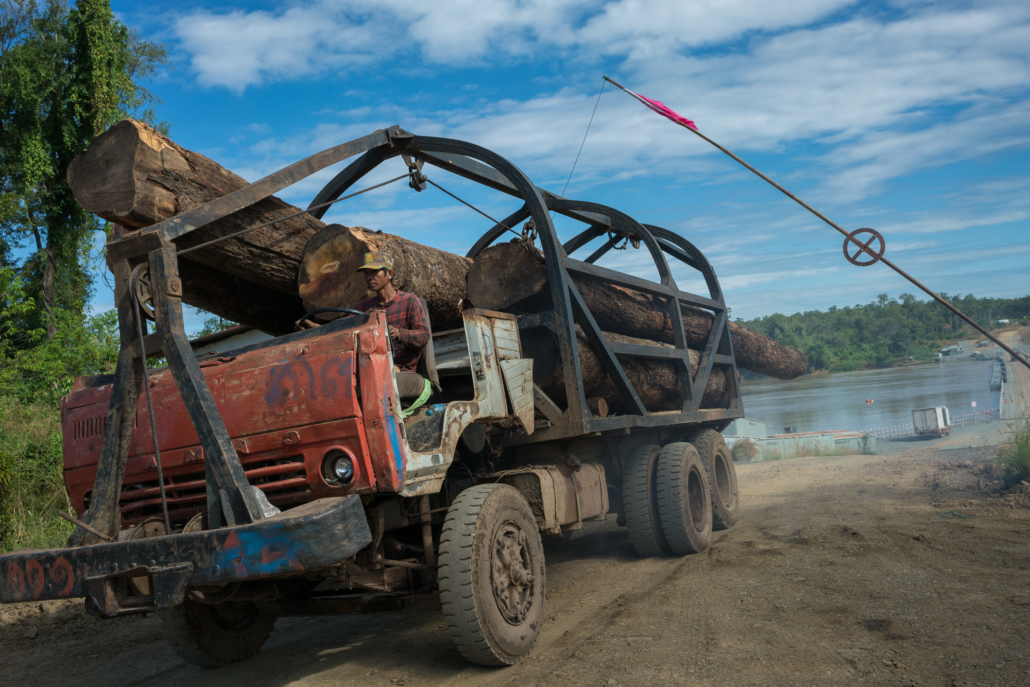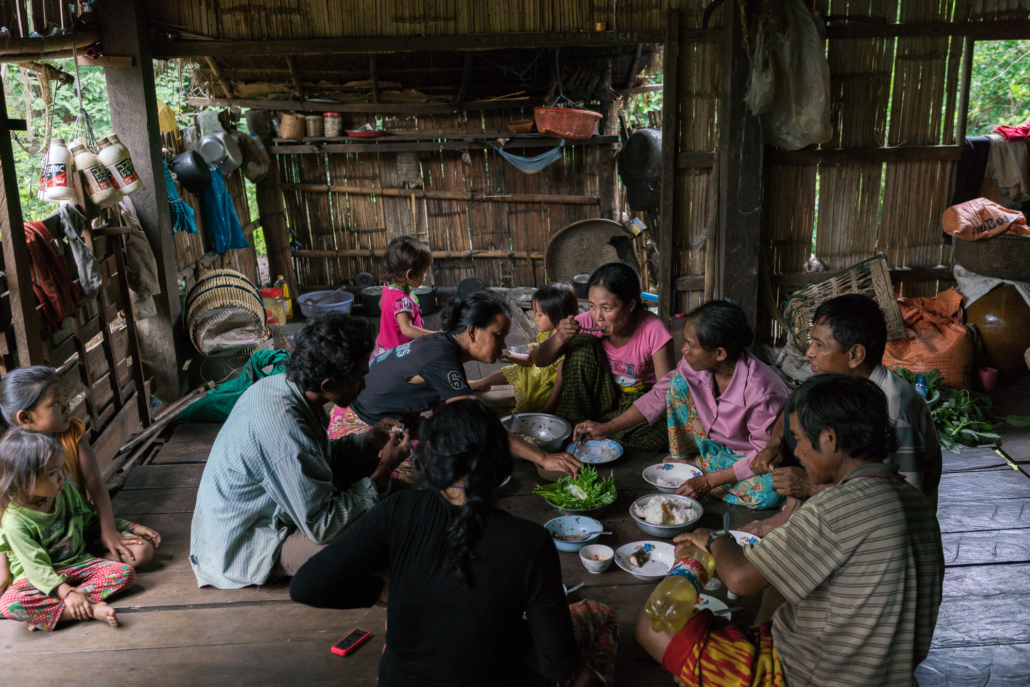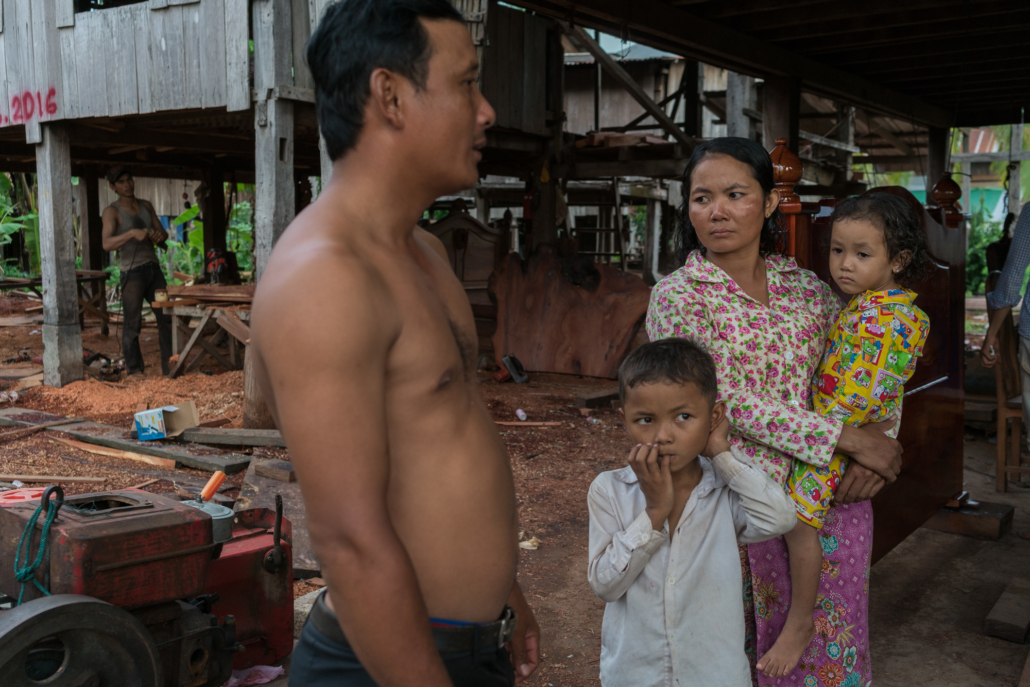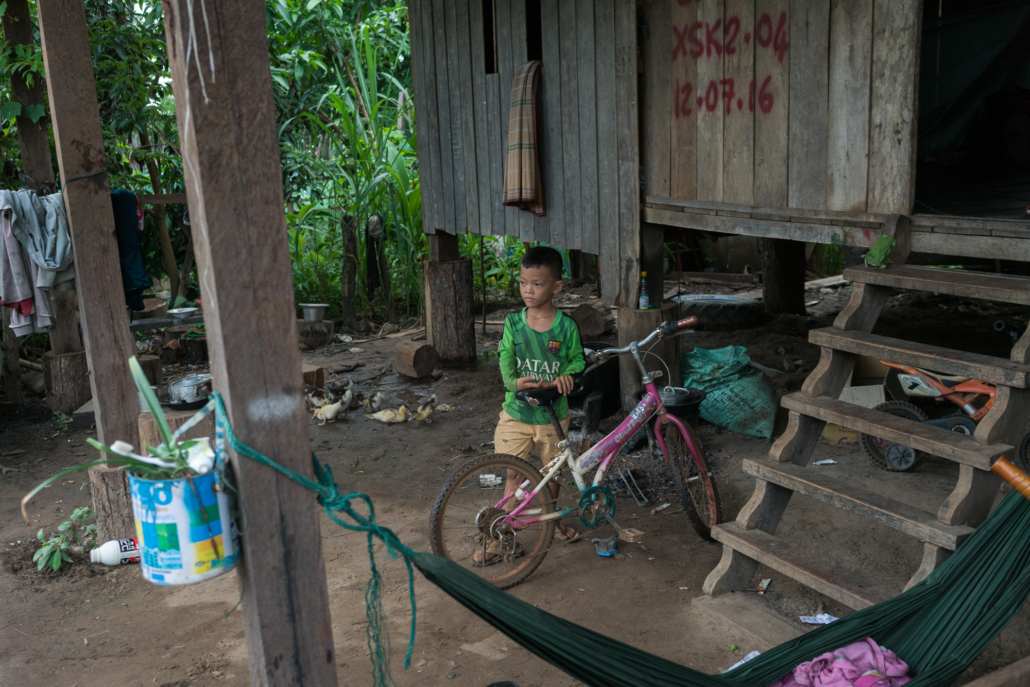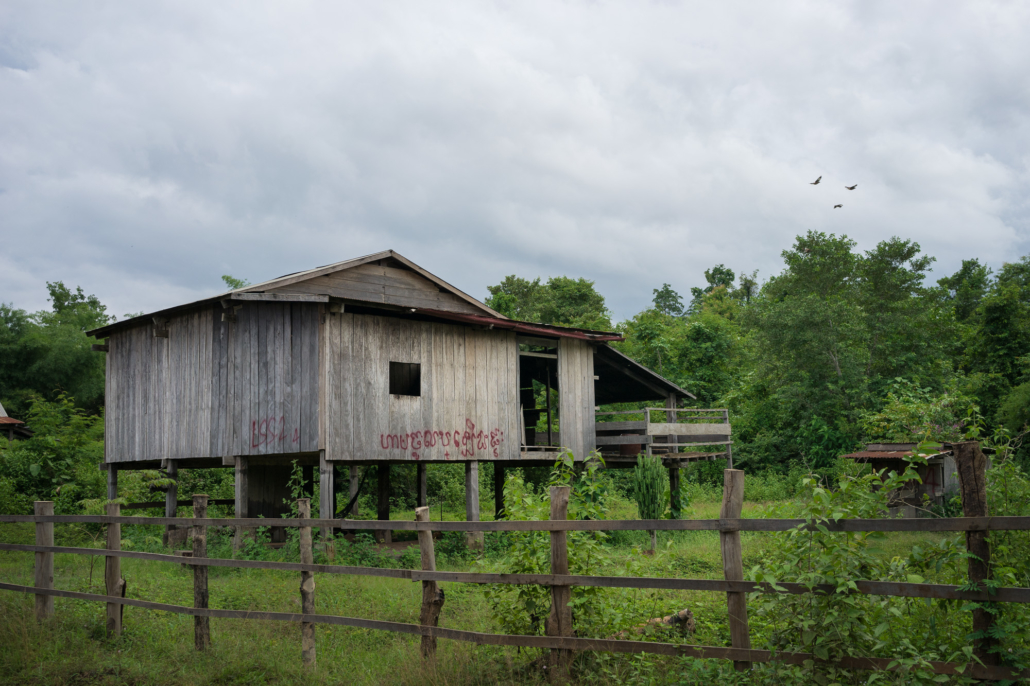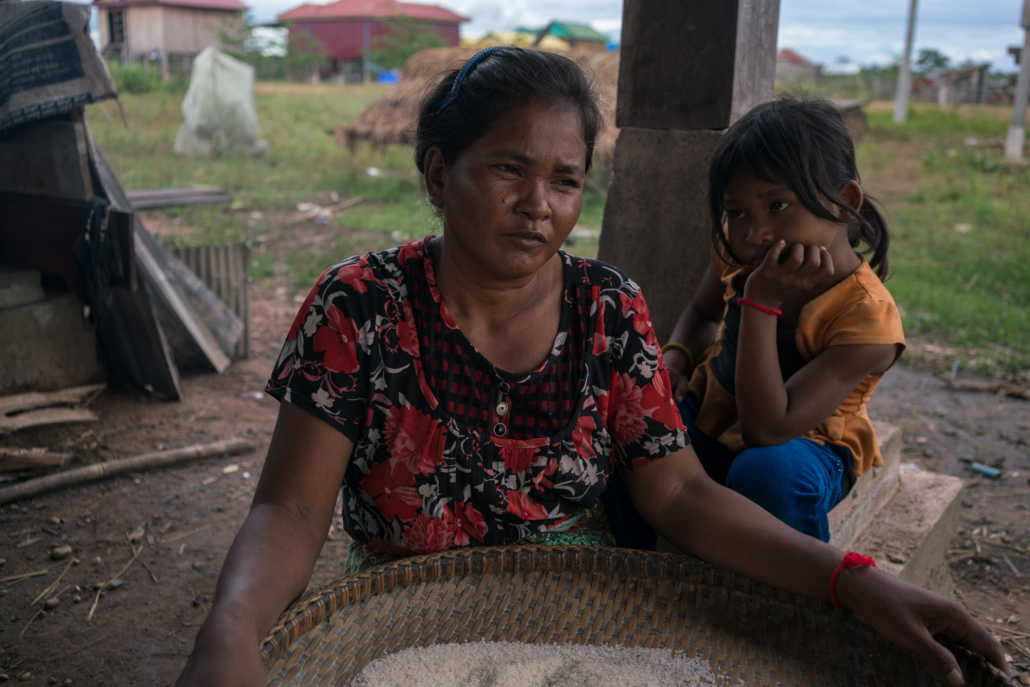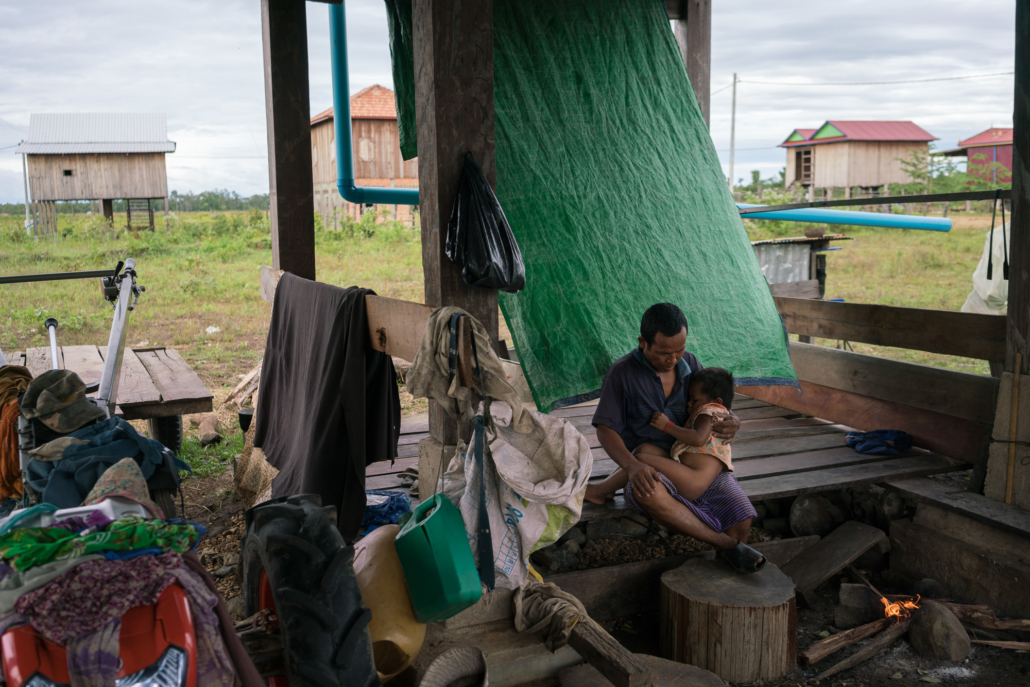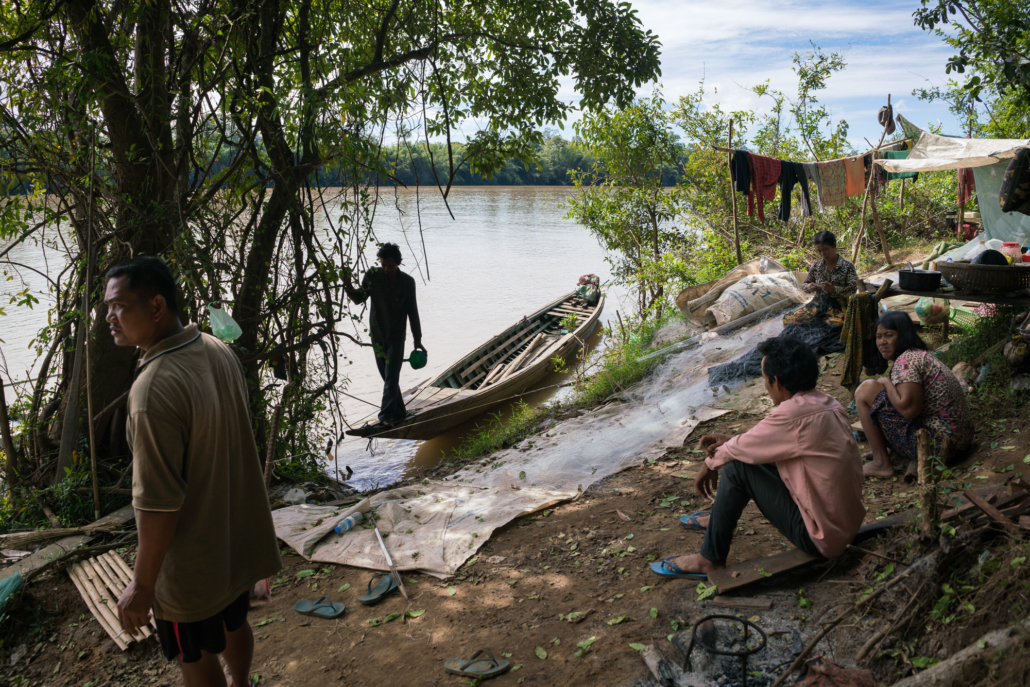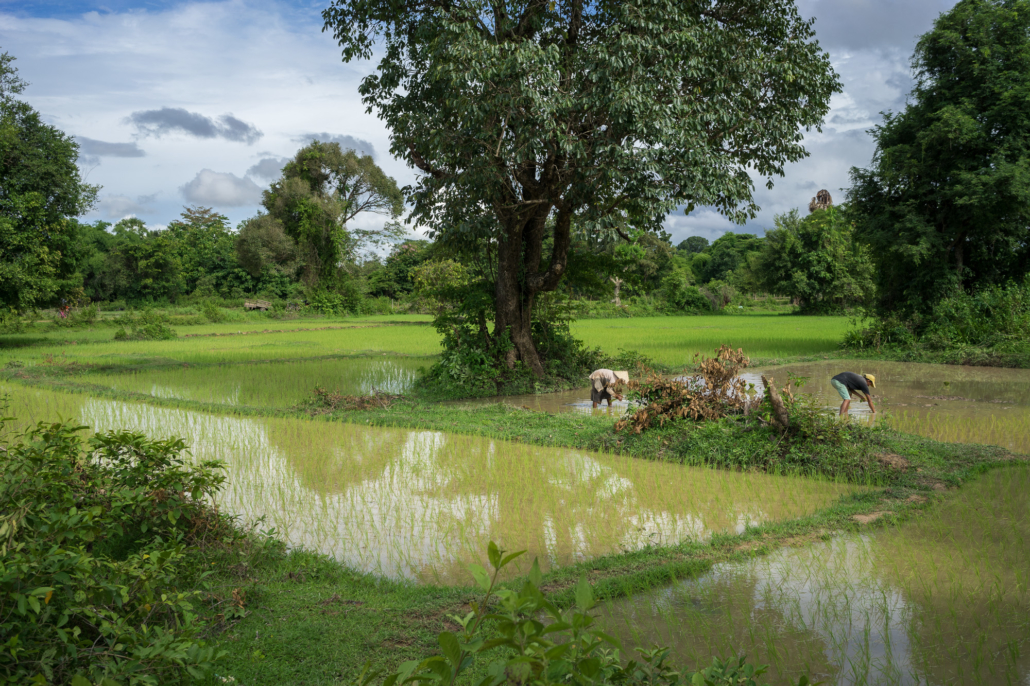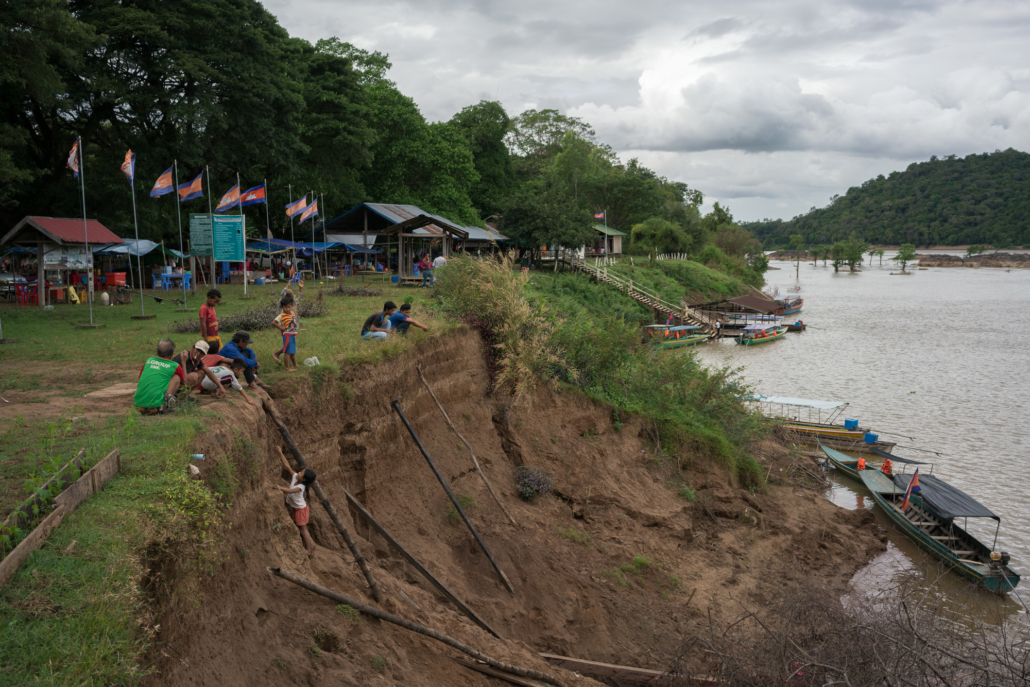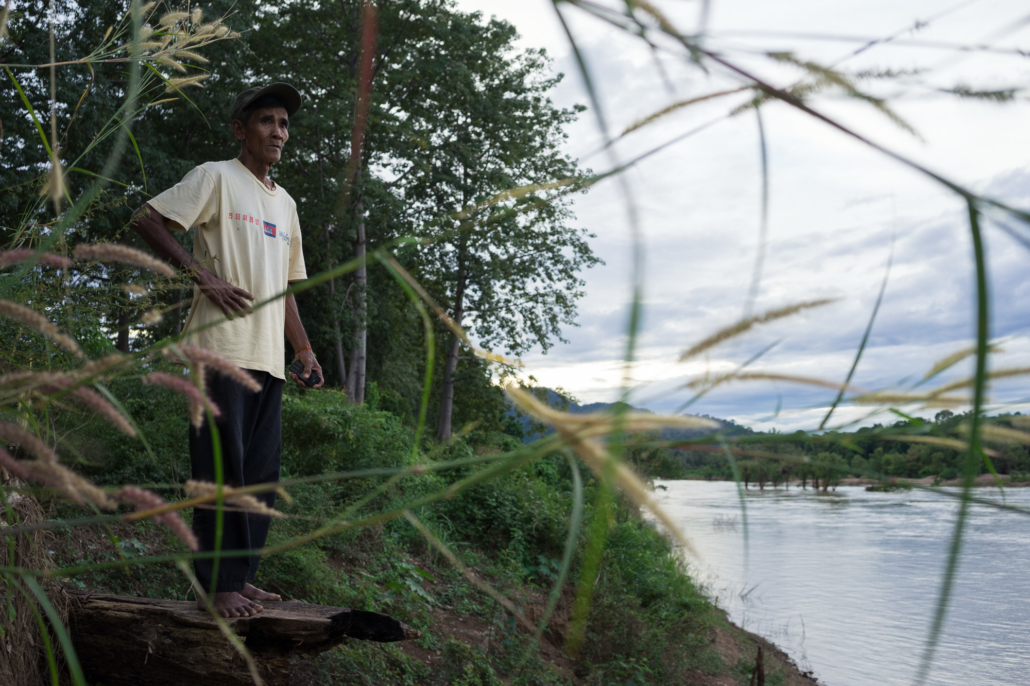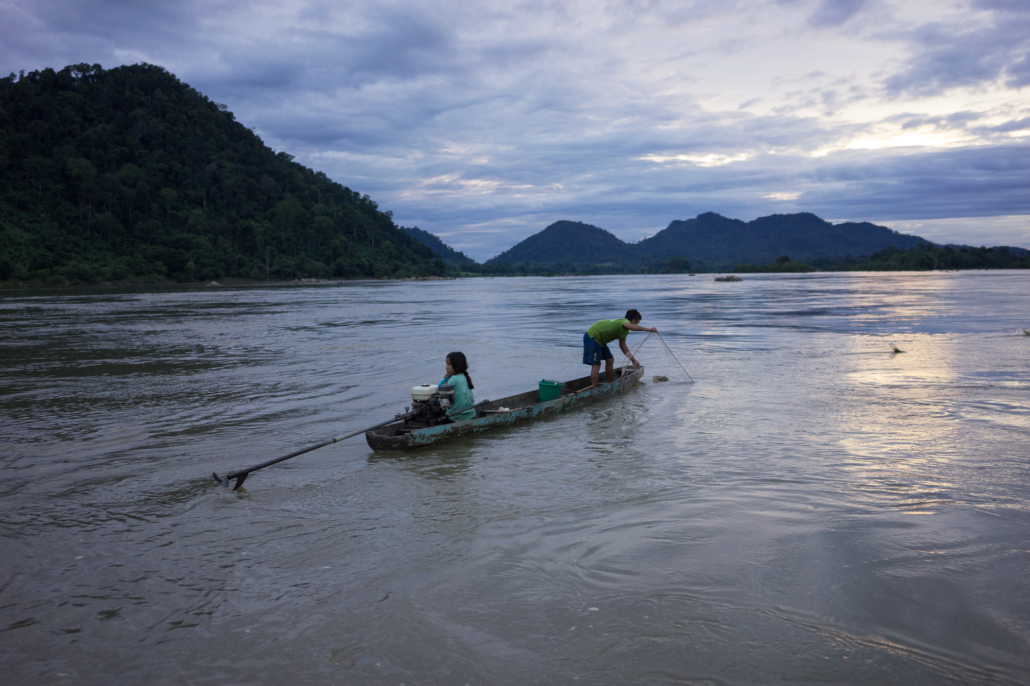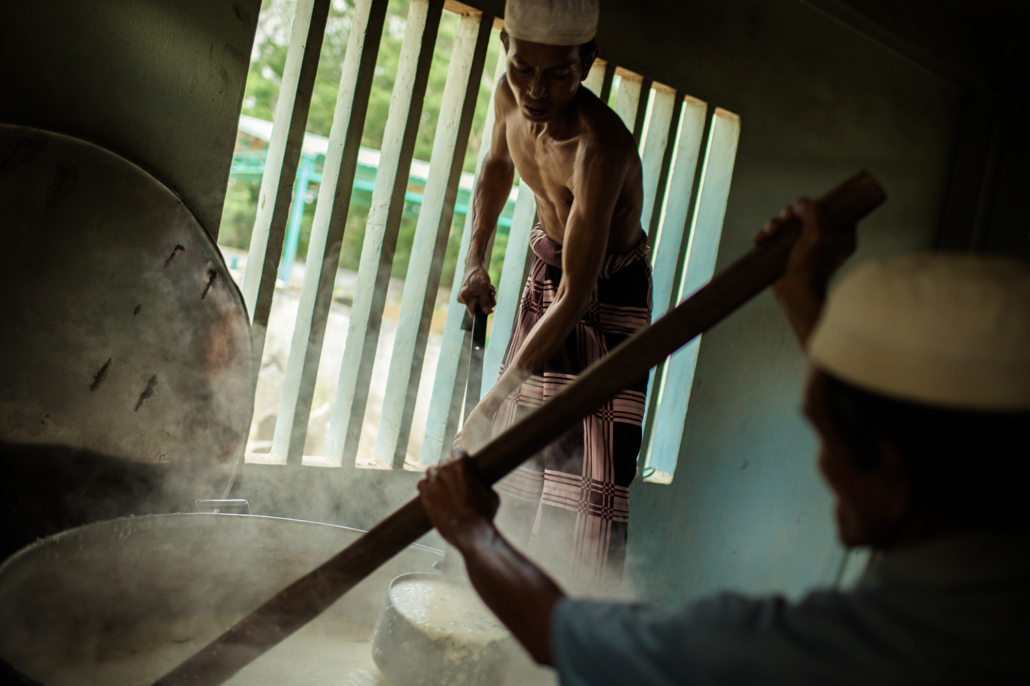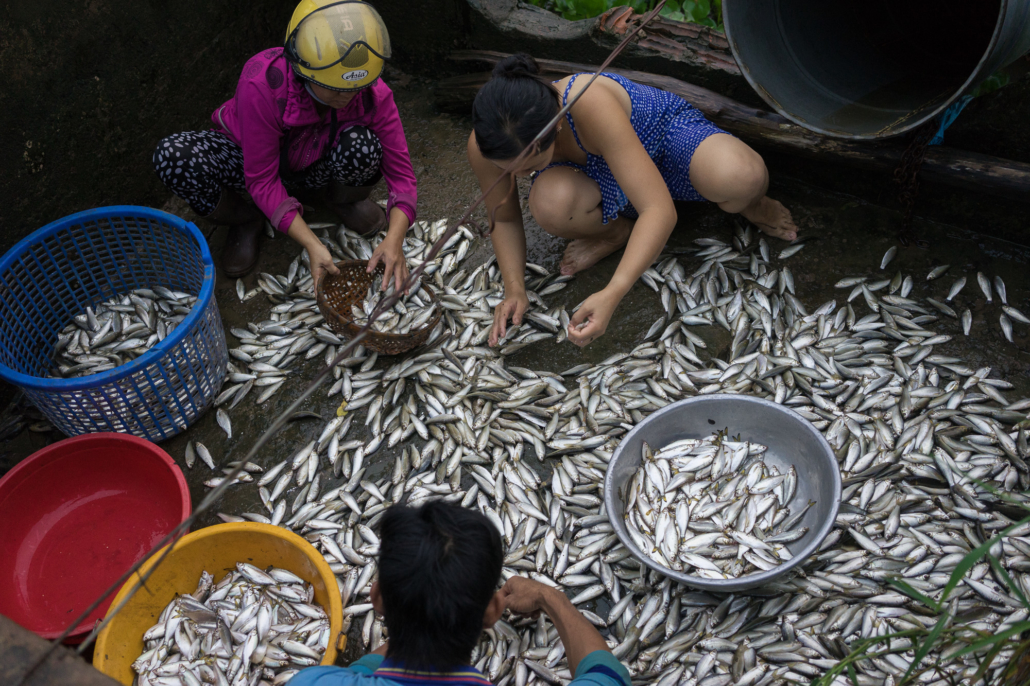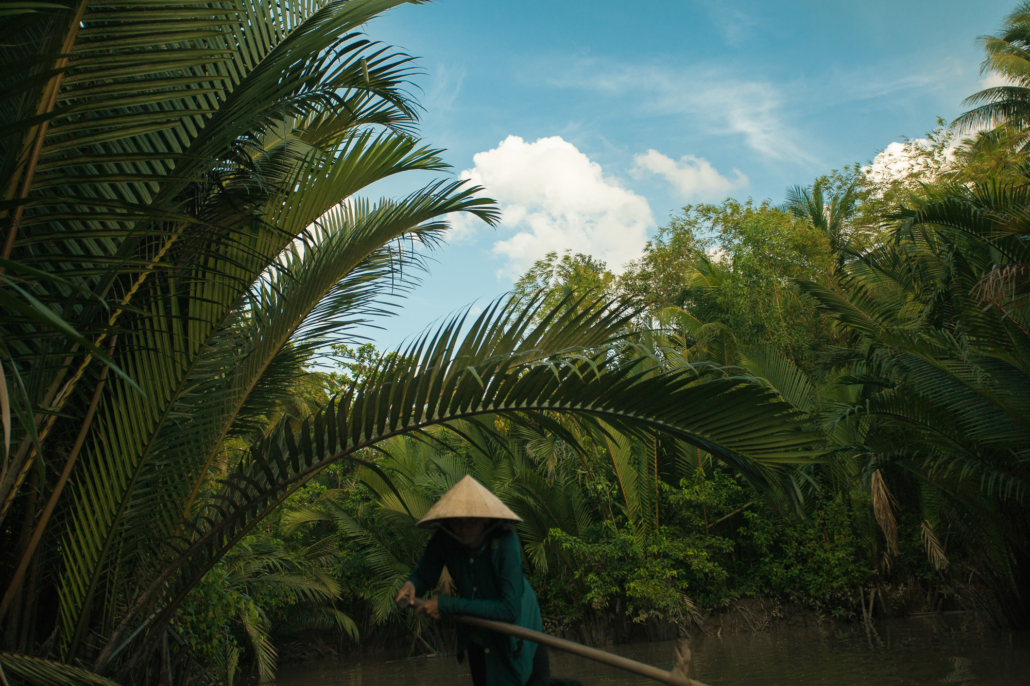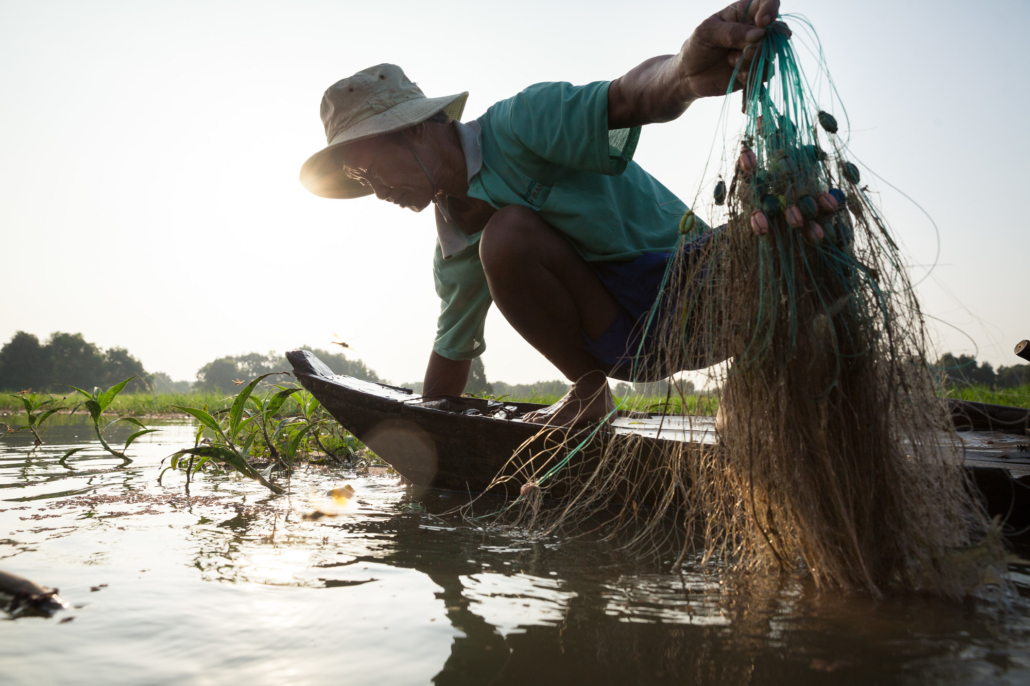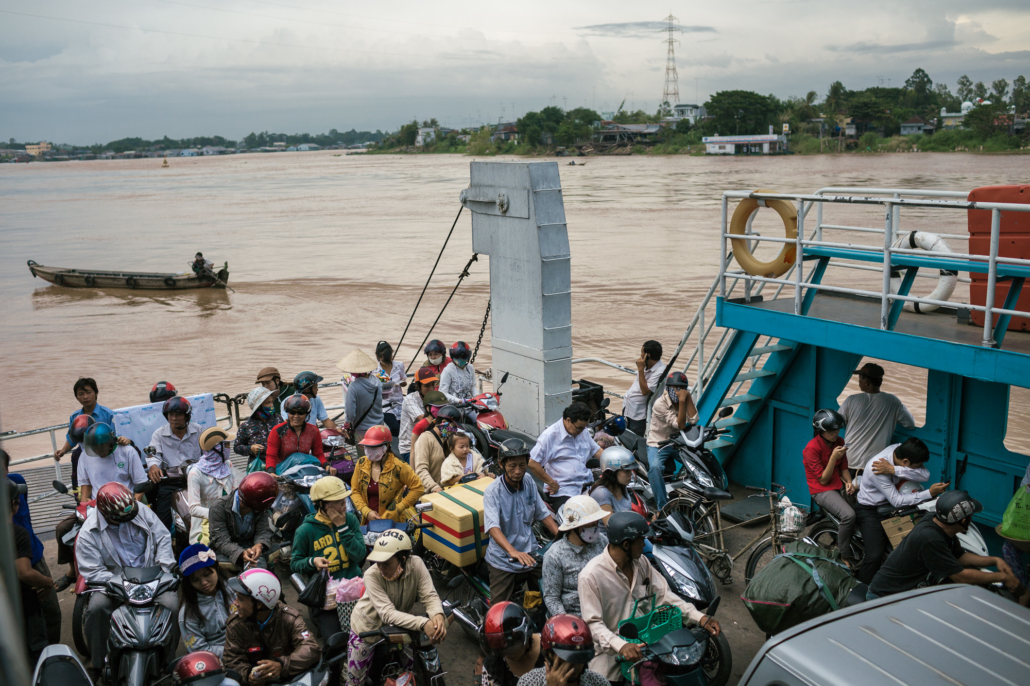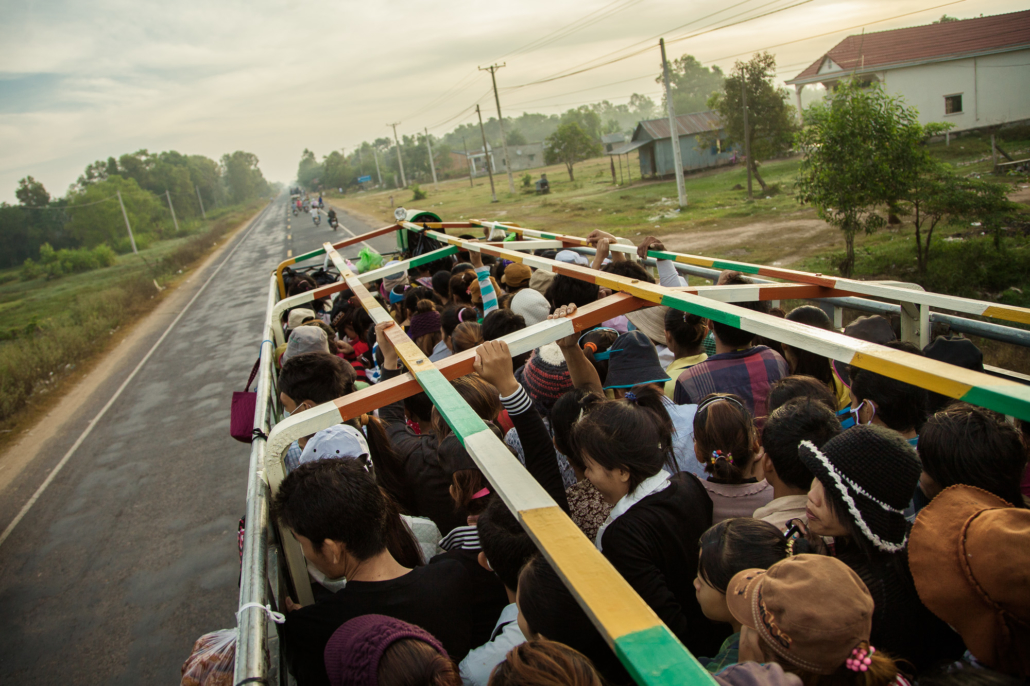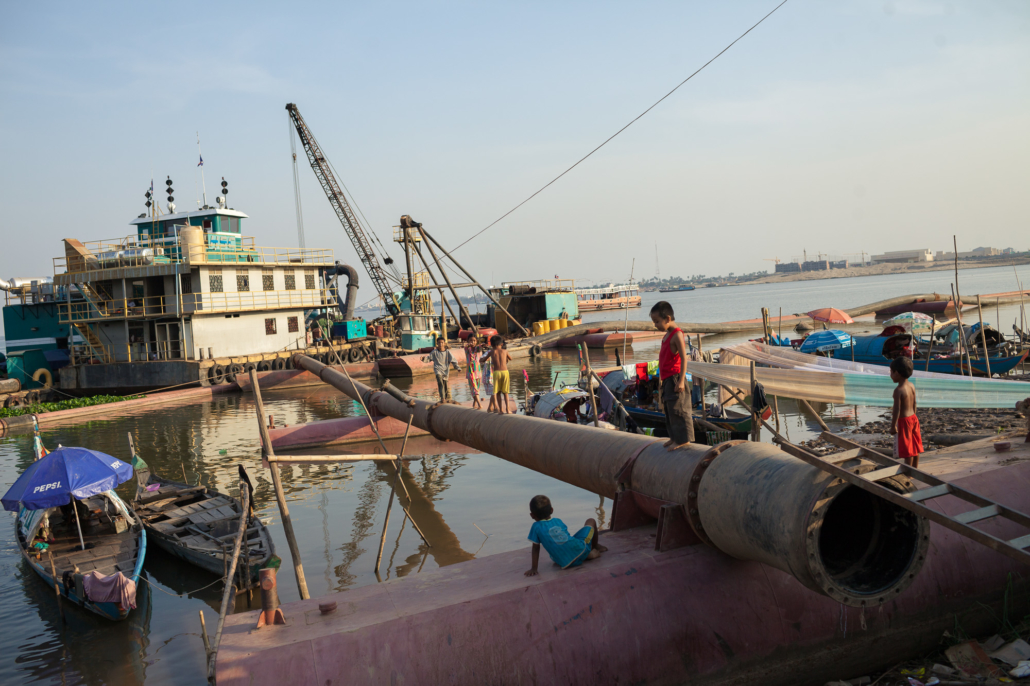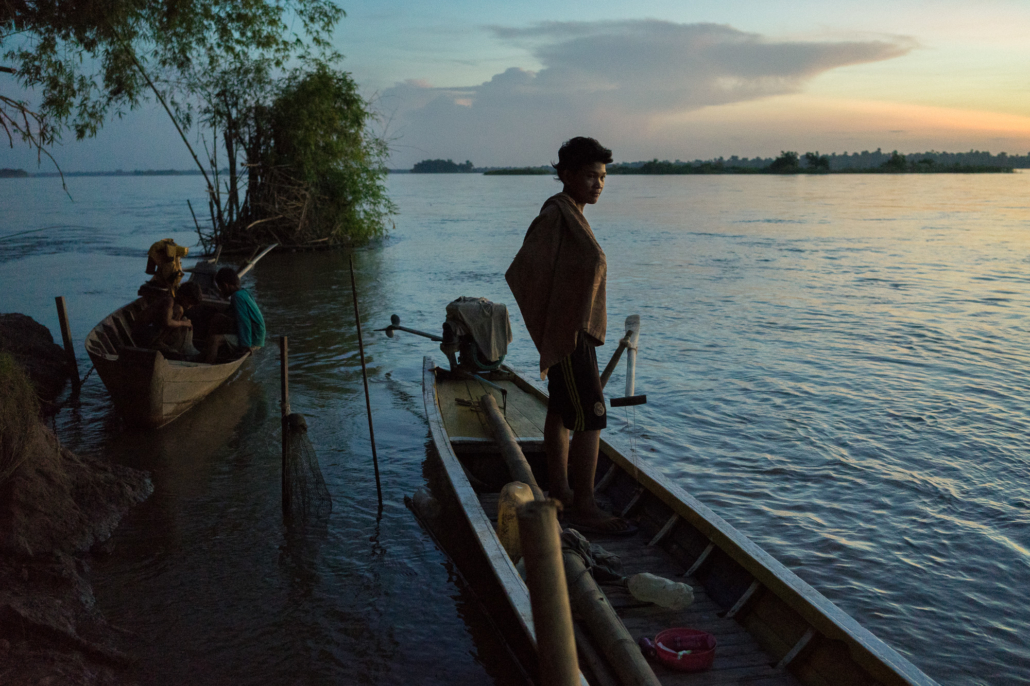“I’ll die drowned, submerged by the river that gave us life.” Je Srey Neang has her fate reflected in her eyes. She has spent thirty-two springs in the village of Kbla Romes, along the Sesan, a major tributary of the great Mekong River. She has three children, but her son left with her husband after the divorce. He had accepted six thousand dollars to go somewhere in a city for a life of misery looking for factory work. The Cambodian dam, Lower Sesan II, will bury her village, which is located a few miles from the Sesan’s confluence with the Meking. The Chinese built the dam to provide electricity to the capital Phnom Pehn, a project supported by the elites of the two countries regardless of the impacts on locals. An estimated 5,000 people will be forced to leave, and 40,000 will follow when fish become scarce as the dammed river ceases to flow freely. “I have decided to resist. They will not buy me. They will not bend me with their weapons. And I will not move for as long as I am alive.” Her determination, while continuing to violently hoe the garden, is underlined by her hard, tearless eyes. A neighbor shows some photos taken with a cell phone of men in black who come each week to pressure Je Srey to leave. “This is what we have been given – it’s our livelihood. I am not opposed to the dam, but it should not have to destroy our lives to power the TV of someone living a thousand kilometers from here. When the water starts to rise I will peacefully stay in my home.”
Je Srey’s is a common story. The Mekong River Basin is one of the most contested in the world. Tensions have been growing for years between South East Asian countries over the use of water for irrigation and as a source for hydropower. “Over 60 million people are supported by this basin,” explains Tek Vannara, executive director of the Cambodian Non-Governmental Organizations Forum. “Governments and private companies have agreed to build dams all over that will impact fisheries, tourism and agriculture. The dams will cause instability and persecution, especially for the poorest. Numerous villages, especially indigenous communities, will lose their land, forsaking their customs and traditions. Food security for millions of people is at risk.
Over the past five years, the Southeast Asian continent has plunged itself into a race to build hydropower dams in a desperate attempt to meet the growing demand for electricity. This is especially true for the more developed economies: Thailand, Vietnam and China. The Dragon has built seven large hydroelectric plants in Upper Mekong (known as Lancang in Chinese). Although detailed plans remain secret, twenty-one more dams are being planned. The southern part of the basin, which covers Myanmar, Laos, Cambodia, Thailand and Vietnam, contains eleven dams. The majority are in Laos, one of the poorest countries in Asia. With the help of Chinese and Thai investors, the country aspires to become Asia’s hydropower battery. The potential energy production is 26 gigawatts – more than France produces. Already today, according to the international association of hydroelectric energy, “International Hydropower Association,” electricity accounts for about 30 percent of Laos’ exports. By 2020, the goal is to export over seven gigawatts to Thailand, five to Vietnam, and just 0.2 gigawatts to their enemy, Cambodia.
Three dams are under construction: the Don Sahong Dam, the Xayaburi, and summer 2017 could see planning start on the colossal Pak Beng dam, in the heart of Laos’ Upper Mekong. This is where Francis Ford Coppola placed Kurtz’s base in his Apocalypse Now, and the area is now a popular tourist destination. Pak Beng will be a 912-megawatt giant that could produce 4,775 gigawatts of energy per year. “At the moment, there are no excavations, but there are often engineers and surveyors taking measurements and surveys,” explains Vilang Mak, a guide with the group Shampoo Tours, which specializes in cruises on the Mekong. The tastefully decorated teak boat is occupied by a dozen French tourists taking pictures of the thick, dense jungle around the Khmu ethnic villages that dot the river along the route from Luang Prabang to Huay Xai. “The dam will stop tourism in these areas, and cruises on the Mekong will become a memory,” continues Vilang. According to Pianporn Deetes from International Rivers, one of the leading organizations for the protection of rivers, interviewed in their Bangkok offices, “about 25 indigenous villages in Laos and two in Thailand will be wiped out by the Pak Beng dam construction. Over 6,700 people will have to be forcibly relocated.”
For the countries bordering the river, the dam boom is a source of headaches. On the one hand, the Thai, Cambodians and Vietnamese will secure greater energy security. But, on the other hand, the Laotians’ plans, supported economically by China, are concerning from both a geopolitical and also a food security point of view. Even if today the countries can cooperate in emergencies (as demonstrated by China’s opening of supplies on the Mekong during the drought of March 2016), the control of water flow and sediment in the future could become a tool for political blackmail and a source of tension.
According to Ho Uy Liem, vice president of the Vietnam Union of Science and Technology Associations, “the dams will particularly harm the Mekong Delta in Vietnam, which produces about half of all rice, over 70 percent of fish, and almost all of the fruit in the country. An alimentary threat looms over the region,” underlines Liem, recalling how the Philippines and Indonesia depend on Vietnamese food exports.
In an attempt to regulate diplomatic tensions, the states bordering the river created the Mekong River Commission (MRC) twenty years ago. The aim was to provide guidance on cross-border river management. “Let’s clarify immediately that we are a technical commission, not political, and we cannot make decisions,” says the president of the MRC, Pham Tuan Phan, holding his hands out in front of him while scanning the horizon from his office window in the capital of Vientiane. In the distance is the market along the banks of the Mekong, and on the other side is neighboring Thailand.
“With regard to the dams, we have provided important information on how to make implementation more sustainable, monitoring water quality and proposing joint development plans,” he explains in a meeting at the Vientiane headquarters. “We facilitate the consultation process. We meet all parties, including China, which is an observer, but we do not make political decisions. That’s up to diplomacy.” Those who are collaborating, in reality, seem little interested in such diplomacy. The impenetrable authoritarian Bounnhang Vorachit, president of the Laos People’s Revolutionary Party, governs Laos. He has built his developmental policy around dams, at the cost of eliminating internal opposition and any environmentalists who oppose construction. “Laos is not open to any discussion about the dams. Anyone who speaks often disappears,” explains an activist who prefers anonymity to protect his job and safety. In Cambodia, Hun Sen, prime minister since 1993 and leader of the Cambodian People’s Party, openly supports criticism against dams in Laos. However, he represses any comment on the projects on home soil. Thailand is split between Bangkok, which needs clean energy at a low cost to the economy, and the communities living along the river. The river communities are are suing Thailand’s national electric company, EGAT, for supporting the Xayaburi dam, because they fear strong impacts on fishing. As for Vietnam, the Asian hydropower race is a defeat on all fronts. The country will gain little electricity for imports, a reduced fresh water supply and a collapse in the amount of fish in the river. There is also the risk that a reduced water level in the Mekong Delta could favor saline infiltration and subsidence. This would make the floodplains, the country’s breadbasket, less fertile.
Lower Sesan II, forced relocations and forgotten stories
“Hun Sen criticizing the dams in Laos? Let’s look at what’s going on within his own borders,” explains a Cambodian activist who prefers not to use his name for fear of retaliation from the government. There have been numerous murders of environmentalists, including the assassination of environmentalist leader Chut Wutty in 2012. “The Cambodian dams are killing the Mekong and forcing thousands of people to relocate.” The government has already erected some new towns to shelter those dislocated by the colossal Lower Sesan. Ros Sophy, 42 years old, sits in the door of her new home smoking a Hongua, a blond Laotian. “I do not have a job, but the government gave me 2,000 dollars and a roof.” Ros is one of the thousands of people displaced by the Lower Sesan dam who now live in “relocation villages,” as they are called by government bureaucracy. The Roal Group of Cambodia’s hydroelectric project in partnership with the Chinese Hydrolancang International Energy has distributed numerous compensations, and both companies also have allowed the authors to photograph construction work. This is contrary to what would have happened in Laos, where companies have blocked press access to the areas concerned for those trying to obtain information. Many however are unsatisfied: the compensation for forced relocation is ridiculously low, and housing quality is poor in areas that are not adapted for agriculture. Fishermen cannot adapt to the new lifestyle. Mann Sophart is 48 years old and has spent his life among fishing nets and his little breeding farm behind the house.
“Here in the relocation village, I cannot have my animals or cultivate. The soil is poor, and there aren’t any forests, with fruits and animals to hunt, like the monitor lizards. Now, with my children, I work at the factory. I take home 50 dollars a month, but they often leave me at home and do not pay me.” The buildings, at first glance well-organized and pleasant, are often inhospitable. “They are a damn oven,” says Mo, Mann’s neighbor. “At night, there’s not a breath of air. Life in the jungle was better than the malarial plains far from the river. Pheak, an 18 year old with a hipster cowlick, spends his days playing pool at an old dusty table with six balls. “In the village I could go fishing and hunting, or do woodwork. I was calm. Now there is a clinic nearby, sure. But I’m hurting inside me.” The agricultural fields assigned by the government are far apart, eleven kilometers, and you have to go on foot, says Mr. Lom Dum (“my recommendation: write Mister”) while taking a break from work in the muggy late morning air. “It’s so far away that we sleep most of the week in shacks. The work is like that. And then there are the rocks and stones. No rain, no water. It’s pretty brutal business. Maybe we will have to stay here.”
Xayaburi, a sustainable dam?
Twelve hundred kilometers further north along the Mekong, among the mountains with climbing roads and hairpin bends – not even a kilometer of highway exists in Laos – lies the area of the Xayaburi dam. It’s not far from the enchanting pearl of Mekong, Luang Prabang. The numerous controls at once make clear the level of security around the project. “No journalists, no visits,” say the guards, signaling to leave. U-turn, go back. In the village of Xayaburi no one wants to answer questions. Nobody knows anything about the fate of the inhabitants of Houay Souy, one of the first villages evacuated by the construction companies and the government. The developer of the 3.8 million dollar project is a Thai engineering group, CH-Karnchang, supported by a group of banks in Thailand. CH-Karnchang never responded to several attempts by the author to request a visit to the site and never responded to questions about the sustainability of the dam.
The colossus of 820 meters wide and 33 meters high can be seen only from a distance. With a maximum production capacity of 1285 megawatts, it is one of the most worrisome projects to farmers, politicians, environmentalists and geologists. Xayaburi will completely dam up the Mekong at one of the points where it gathers the most water. About 95 percent of electricity produced (7,500 gigawatts per year) will be bought by Thai utility Energy Generating Authority of Thailand (EGAT), who is also the main buyer from the hydroelectric stations Don Sahong and Pak Beng.
“One of the main impacts is the reduction in the amount of nutrient-rich sediment, which will have repercussions on fishing and agriculture for communities living along the river and the southern territories along the Mekong,” explains Tek Vannara, from the NGO forum, during a long interview in his Phnom Penh office. Chris Barlow, a fisheries expert at the Australian Centre for International Agricultural Research (ACIAR), confirms the position of non-governmental organizations. “When these dams are completed, the impact on fishing will be immediate, in particular regarding the amount of fish available,” says Barlow.
Barlow’s is a position that the president of the Mekong River Commission, Pham Tuan Phan, does not share. “Environmentalists have a radical approach and have decided to not participate in the process. Xayaburi is a state project, which implemented our requests to mitigate impacts. There are passages for fish, with many “stairs” to allow them to go against the current. These passages can even accommodate larger fish, such as the giant pangasius, which is three meters long. There are discharges and the turbines have been modified to allow for the passage of aquatic species.” CH-Karnchang has used the Finnish consultancy, Pöyry, to advise on dam construction in order to properly implement the demands made by the MRC. In a statement released to the author from Knut Seirotzki, director of the hydroelectric section of Pöyry Asia, “the project’s planning and operation is designed to conform to international standards and Mekong River Commission (MRC) guidelines as well as related laws in the Laos PDR and Thailand. The Laos PDR has some of the leading environmental and social impact prevention legislation in Southeast Asia”.
However, the strict secrecy surrounding the project, the lack of accessibility and the skepticism of the environmentalists appear to contradict these promises. DzThe project will be disastrous – to find out, just wait for operations to start. The Mekong will be effectively cut in two,dz comments Pianport Deetes caustically.
Don Sahong, a dolphin cemetery
For 40,000 Laotian kip (4 euro) Suk Lang takes tourists in the middle of the Mekong to spot the famous Irrawaddy dolphin, a mammal of which there remain only 50 in the world. His boat casts off from the Cambodian village of Preah Romkel, in the Stung Treng province. A little less than a kilometer and the boat stops just before entering Laotian territory. The military observes vaguely from afar. A ripple of water, and the shiny head of a male appears. Then another blunt-nosed head breaks the surface, a light grey color. And, finally, a third. “They’re all that’s left. They’ve found refuge in this pool where they know that no one touches them.” Suk, 62 years old, dry and thin in his large uniform, was commissioned by the Provincial Council to monitor the animals, to prevent tourists from disturbing them, or from being hunted by poachers. His enemy now, though, is the Don Sahong Dam, started in 2015 by the Malaysian company MegaFirst and near completion. “Hear the noise? It’s less than a kilometer from here,” he says, pointing to the gloomy northern sky.
The dolphins are in danger of disappearing forever. And with them will disappear so many of the eco-tourists who come to see them in this picturesque setting in Kratie, where the Mekong foams and glimmers between the rapids. “Tourism means survival for 600 families,” says Suk, adjusting his military tunic to emphasize the authority of his opinion. Every now and then environmentalist associations come to protest. They bring banners, slogans, songs and sweets with honey to distribute to tourists. But on the other side all is silent. Laos ignores any requests to modify the permit. At least in our case, the construction company also does not allow anyone to come closer to see what is happening. We had to launch a drone from the border and dodge the military to get a few exclusive images.
“If there is no hope for the Irrawaddy dolphin – it soon will become extinct – for the inhabitants the real problem is the fish that make up the primary source of survival in numerous communities,” says Suk. Environmentalists repeatedly underline this danger. One such environmentalist is Chhith Sam Ath, country director of the WWF, who calls out numerous scientific reports and impact assessments that “clearly show the dam will do untold damage to migrating fish, and will affect the food security of many fishermen south of the dam.” A report from the Mekong River Commission published in 2015 established that the completion of all 11 dams planned could wipe out half of all fish present today in the river. That’s especially true for large fish that may become totally extinct. Hundreds of thousands of inhabitants would lose the ability to fish from the river, which is a loss both of food for survival and employment. The damage to the development and social security in the country would be incalculable.
Mekong 2100
The level of the Mekong is at a record low, the lowest since measurements were first recorded hundreds of years ago. The dry season in 2017 promises to be even more severe than last year’s. Yet this report, which required over a month of work in the field, did not find any evidence that the dams will be closed or modified, as evidenced by the recent announcement that work will begin shortly on the Pak Beng dam in Laos. Although Bounnhang Vorachith’s government has shown willingness to incorporate some elements of sustainability into the Laos dams, today there is still not a comprehensive study on the impact of all 11 dams along the Mekong, together with the almost 28 dams on the Chinese territories along the Mekong. Almost all of the NGOs interviewed condemn the modifications made to the dams under construction as “insufficient and not based on solid research,” as well as “a condemnation for many indigenous populations living along the river.”
There are several external factors that should also be considered. The impacts of climate change are causing the glaciers in the Tibetan plateau to melt, which increases the intensity of rainfall fed to the river, says ISGS. Flooding will become more frequent in the wet season, and the dry season will bring water shortages. Such conditions will only exacerbate tensions over the water that the dam will remove from the river’s natural flow.
An additional factor is the isolationism of many governments in the region from the international community. According to Rémy Kinna, an analyst at Transboundary Water Law (TWL) Global Consulting, “to-date, Vietnam is the only state to have ratified the United Nations Watercourses Convention, a global legal mechanism to facilitate fair and sustainable management of transboundary freshwater lakes and rivers.
The absence of a common framework has made the states unwilling to negotiate politically, leaving technical and analytical issues in the hands of the Mekong River Commission, without any common decision-making power.
The region’s future remains uncertain. “Future water shortages threaten to slow down the key sector for alleviating poverty: agriculture,” explains Brahma Chellaney, a geopolitical analyst and author of the book Water: Asia’s New Battleground. “Water is increasingly becoming a determining factor in understanding whether states are moving towards cooperative development or to destrictive competition.” For Chellaney, China carries the greatest influence because China controls the Tibetan plateau, which is the primary source for Asian rivers, the Brahmaputra and the Ganges. China also supports hydroelectric development in Laos. “If these new developments on the Mekong bring water crises, as we have seen in the past, this will intensify the tensions between states. It can slow development, jeopardize food security, and trigger mass migration fro the worst affected areas. With Asia’s peace at risk, it is imperative to invest in institutional water cooperation that will reinforce work on transboundary water resources.”
Meanwhile, Je Sre sits in her village, hoeing the ground and waiting for the water to begin to rise. The neighbors are smoking on the stairs, while a father ceremonially pours water over his daughter’s head. The Buddhist monk who looks after the local pagoda peeps out. Pol Kong, he introduces himself. He gazes out into the distance at the river and shakes his head. “The dam builders have already built a new temple to seek Buddha’s favor. But Buddhism teaches that those who build badly will be born evil in the next life. If someone takes water from the fish, in the next life they will be a fish without water.”
TEXT: Emanuele Bompan
PHOTO & VIDEO: Thomas Cristofoletti
VIDEO: Camilla Minarelli
MAPS: Riccardo Pravettoni
…..
THANKS FOR THE SUPPORT
![]() European Journalism Center
European Journalism Center ![]() IDR Grant
IDR Grant
![]() CapHolding
CapHolding ![]() Fondazione LIDA
Fondazione LIDA
…..
THANKS FOR THE CONTRIBUTIONS
Maririosa Iannelli, University of Genoa

